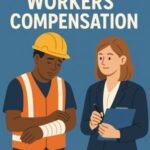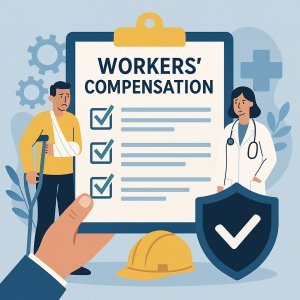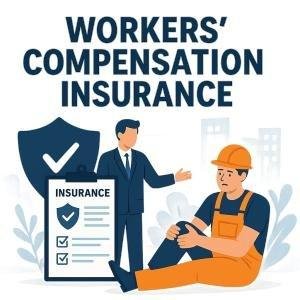
Quick Workers’ Comp Quotes—Personnel Agency
August 29, 2025
Retail Loss-Prevention Security Guards: Preventing Claims and Shrinkage
August 29, 2025In today’s competitive business environment, controlling workers’ compensation costs is a critical priority for organizations across industries. among the various workplace hazards, occupational noise-induced hearing loss remains a meaningful contributor to workers’ compensation claims and associated expenses. Implementing effective Hearing Conservation Programs not only safeguards employee health but also plays a pivotal role in reducing the frequency and severity of hearing-related claims.This article explores how well-structured Hearing Conservation Programs can lower workers’ compensation hearing claims, enhance regulatory compliance, and ultimately contribute to a safer, more cost-effective workplace.
Table of Contents
- Hearing Conservation Programs as a Strategic Investment in Workplace safety
- Analyzing the Impact of Hearing Conservation on Workers Compensation Claims
- Key Components of Effective Hearing Conservation Programs
- Best Practices for Implementing and Sustaining Hearing Conservation Initiatives
- Q&A
- Final Thoughts
hearing Conservation Programs as a Strategic Investment in Workplace Safety
Investing in robust hearing conservation initiatives is more than just regulatory compliance – it’s a strategic business move that directly impacts the bottom line. By proactively addressing noise hazards, companies can substantially reduce the incidence of occupational hearing loss, which is among the most common and costly workers’ compensation claims. Implementing complete programs that include regular audiometric testing, employee training, and effective use of personal protective equipment (PPE) helps identify risks early and mitigates long-term health consequences. This preventive strategy not only fosters a safer working environment but also reduces claims duration and associated expenses.
Beyond cost savings, organizations benefit from enhanced employee morale and productivity when workers feel protected and valued. Consider the following core components that make these programs accomplished:
- Noise exposure Monitoring: Continuous assessment ensures compliance with permissible exposure limits.
- Education & Training: Empowers employees to understand risks and use hearing protection correctly.
- Regular Hearing Tests: Detect early warning signs to prevent permanent damage.
- Customized PPE Solutions: Cozy and effective equipment encourages consistent use.
| Programme Element | Impact on Claims | Business Benefit |
|---|---|---|
| Exposure Monitoring | Reduced incident rates by 30% | Lower insurance premiums |
| Employee Training | Improved PPE compliance by 40% | Enhanced worker safety culture |
| Audiometric Testing | Early identification of hearing loss | Reduced long-term compensation costs |
Analyzing the Impact of Hearing Conservation on Workers Compensation Claims
Implementing effective hearing conservation measures has demonstrated a significant decrease in workers compensation claims related to occupational hearing loss. By proactively addressing noise exposure through regular monitoring, employee training, and the provision of proper hearing protection devices, organizations create safer work environments that directly reduce the risk of injury. This preventative approach not only supports employee well-being but also contributes to lowering incident rates, which in turn minimizes the financial burden from claims and insurance premiums.Employers who invest in these programs frequently enough see measurable improvements in productivity and workforce morale, further enhancing their operational resilience.
Key benefits observed from hearing conservation initiatives include:
- Early identification of hearing threshold shifts,facilitating timely intervention.
- enhanced compliance with regulatory standards, avoiding penalties and legal costs.
- Reduced frequency and severity of hearing loss claims filed with workers compensation.
- Improved employee engagement and trust, fostering a culture of safety.
| Program Element | Impact on Claims (%) | Employee Feedback |
|---|---|---|
| Noise Monitoring | −25% | Highly effective |
| Provision of PPE | −40% | Positive |
| Training & Education | −30% | Well received |
| Regular Audiometric testing | −35% | Valued by staff |
Key Components of Effective Hearing Conservation programs
At the core of any successful hearing conservation program lies a comprehensive blend of measures designed to protect employees’ auditory health while also maintaining compliance with regulatory standards. Regular noise assessments are essential to accurately identify exposure levels and areas of high risk within the workplace. These assessments must be accompanied by ongoing employee training, which educates workers on the importance of hearing protection and proper usage of personal protective equipment (PPE). Furthermore, providing custom-fitted hearing protection devices significantly increases comfort and compliance, reducing the likelihood of hearing damage over time.
Equally crucial is the implementation of a routine audiometric testing schedule that monitors employees’ hearing ability and detects early signs of hearing loss. Data collected through these tests can be effectively tracked using a streamlined reporting system,enabling proactive intervention. Below is a brief overview of how these components interact to promote effective hearing conservation:
| Component | Purpose | Outcome |
|---|---|---|
| Noise Monitoring | Identify hazardous areas | Targeted controls and engineering solutions |
| Employee Training | Increase awareness & proper PPE use | Higher compliance and reduced risk |
| Hearing Protection Devices | Reduce noise exposure | Effective noise attenuation |
| Audiometric Testing | Detect early hearing loss | timely intervention & documentation |
Best Practices for Implementing and Sustaining Hearing Conservation Initiatives
To effectively reduce work-related hearing loss, prioritize a comprehensive strategy that includes regular employee education and consistent noise monitoring. Educate workers on the risks of noise exposure and demonstrate proper use of hearing protection devices through hands-on training sessions. Utilize sound level meters to assess workplace noise, identifying high-risk areas where intervention is necessary. Equally important is fostering a culture where safety is valued and employees feel empowered to participate actively in hearing conservation efforts.
- Conduct baseline and periodic hearing tests to track employee hearing changes over time.
- Implement engineering controls such as sound-dampening materials and equipment upgrades to reduce noise at the source.
- Regularly maintain hearing protective equipment to ensure optimal performance.
- Engage management buy-in to allocate necessary resources and enforce compliance.
Long-term success hinges on sustaining momentum through continuous advancement and documented accountability. Establish clear policies and standard operating procedures, and measure program outcomes diligently. Clarity with workers about program results encourages trust and collective responsibility. A simplified framework for maintaining program efficacy can be outlined in the following table:
| Key Component | Action Item | Frequency |
|---|---|---|
| Hearing Tests | Baseline and annual audiometry | Annually |
| Noise Monitoring | Identify excessive noise zones | Quarterly |
| Training | Hands-on use of protection devices | Semi-Annually |
| Equipment Maintenance | Check and replace hearing PPE | Monthly |
Q&A
Q&A: Hearing Conservation Programs - Lower Workers’ Compensation Hearing Claims
Q1: What are Hearing Conservation Programs (HCPs)?
A1: Hearing Conservation Programs are workplace initiatives designed to prevent occupational noise-induced hearing loss. They typically involve noise exposure monitoring, employee hearing tests, use of hearing protection devices, training, and record-keeping to ensure compliance with occupational safety regulations.
Q2: Why are Hearing Conservation Programs important for businesses?
A2: HCPs are critical because prolonged exposure to high noise levels can lead to permanent hearing damage among workers. Implementing effective programs reduces noise-related health risks, enhances employee well-being, and helps organizations avoid costly workers’ compensation claims related to hearing loss.
Q3: How do HCPs impact workers’ compensation claims?
A3: By proactively managing noise exposure and promoting hearing protection,HCPs significantly reduce the incidence of occupational hearing loss. This lowering of cases correlates with fewer workers’ compensation claims, which can result in significant cost savings for employers.
Q4: What components contribute to the success of a Hearing Conservation Program?
A4: Key components include comprehensive noise assessments, regular audiometric testing, employee education on the risks of noise and proper use of protective equipment, implementation of engineering controls to reduce noise at the source, and ongoing program evaluation and improvement.
Q5: Can HCPs improve overall workplace productivity and morale?
A5: Yes. Effective hearing conservation measures contribute to a safer, healthier work environment. This can enhance employee satisfaction, reduce absenteeism, and improve dialog and productivity by preventing hearing impairment-related challenges.
Q6: Are there regulatory requirements for Hearing Conservation Programs?
A6: Yes. In many jurisdictions, including the united States, occupational safety agencies such as OSHA mandate HCPs when worker noise exposure exceeds specific limits. Compliance not only avoids regulatory penalties but also supports best practices in occupational health.
Q7: What is the return on investment (ROI) for businesses implementing HCPs?
A7: the ROI can be significant. Beyond reducing workers’ compensation claims and regulatory fines, HCPs minimize costs associated with lost productivity, training replacement workers, and potential litigation. Additionally, they uphold a company’s reputation as a responsible employer.
Q8: How can organizations get started with implementing a Hearing Conservation Program?
A8: Organizations should begin with a noise hazard assessment conducted by qualified professionals. Following this, develop a tailored program aligned with regulatory standards, invest in appropriate hearing protection devices, train employees, and establish a schedule for ongoing monitoring and evaluation.
Q9: What technologies are available to support Hearing Conservation Programs?
A9: advances include digital audiometric testing tools, noise dosimeters, real-time noise monitoring systems, and elegant data management software to track exposures and test results.These technologies enhance the effectiveness and efficiency of HCPs.
Q10: How do Hearing Conservation Programs fit into broader occupational health and safety strategies?
A10: HCPs are an integral part of comprehensive workplace safety programs. By addressing noise hazards, they complement other health and safety initiatives focused on reducing occupational illnesses and injuries, thereby fostering holistic employee health and organizational compliance.
Final Thoughts
implementing robust Hearing Conservation Programs is not only a critical component of safeguarding employee health but also a strategic approach to reducing workers’ compensation claims related to hearing loss. By proactively addressing noise hazards, providing appropriate protective equipment, and fostering ongoing education, organizations can mitigate the financial and operational impacts associated with occupational hearing impairments. Investing in these programs ultimately promotes a safer work environment, enhances employee well-being, and supports long-term organizational sustainability.
“This content was generated with the assistance of artificial intelligence. While we strive for accuracy, AI-generated content may not always reflect the most current information or professional advice. Users are encouraged to independently verify critical information and, where appropriate, consult with qualified professionals, lawyers, state statutes and regulations & NCCI rules & manuals before making decisions based on this content.








